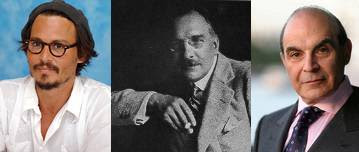Has Robert Teague found a sensational astronomical ‘crib’ into the Voynich Manuscript’s ciphertext? Several Voynicheros have asked me to have a look at his claim: normally, this is researcher code for “I think it’s nonsense but I’d like someone else to say it rather than me, because I quite like the guy“, but let’s see what he has to say…
Certainly, Robert’s best-known previous attempt at understanding Voynichese (Teague numbers) didn’t work out particularly well – as I recall, he used the table on f49v’s margin as a basis for linking glyphs to numbers, much as Robert Brumbaugh did back in the 1970s. However, given that there is a powerful palaeographic argument this table was added roughly a century after the VMs was originally made, this is a hugely unreliable thing to be basing anything substantive upon.
So, what of Teague’s 2009 assault? He starts out (in his “Cracks in the Ice I” document) by pointing out what he thinks are seven fuzzy matches to “Aldebaran” across several pages, and so links seven Voynichese letters with their Latin plaintext equivalents. The obvious problem with this is that this basic fuzzy template can also be matched throughout the entire text: and you’d have to admit that the notion of the whole of the VMs’ text’s being about Aldebaran is somewhat unlikely. But it’s possible, of course.
He moves on (in his “Cracks in the Ice II” document) to finding a secondary crib for the star Alcyone: however, because I’m pretty sure that Giovanni Battista Riccioli first named this in his (1665) “Astronomia Reformata“, this is probably not correct. Robert also suggests some anagrammatic cribs for HOLLAND, POLLAN (“Poland”), and LAPLAND, all of which seem historically anachronistic (for example, Holland wasn’t known by that name until the 17th century). He also makes extensive use of some letter substitutions suggested by Philip Neal, but almost certainly not in a way that Philip himself would feel particularly comfortable with. He finishes up with a suggested translation for the so-called “PM curve word” (EVA ‘oalcheol‘) as ‘COBBLED”: this is done by picking one out of 128 possible permutations and then anagramming the result, a kind of wobbly mid-ground between Brumbaugh and Newbold. Why he chose ‘cobbled’ and not (for example) the rather more august 13th century Anglo-Saxon ‘BOLLOCS’ you’ll have to decide for yourself.
Finally, in his “Cracks in the Ice III“, Robert moves on to try to work out the rest of the alphabet, but runs into trouble with the much-used ‘4o’ token, to which he assigns a rather arbitrary set of 14 possible letter pairs. At the end, Robert proposes a set of six 21-letter mappings, and presents them in a mysterious colour-coded table, which (frankly) doesn’t make a lot of sense to me.
Of course, this is the point in the post where I’m supposed to say something withering, dismissive and ironic to leave readers chortling into their morning cup of coffee: but that’s not even close to what’s going through my mind. Right now, I actually feel a huge sadness that for many people these days this kind of thing is what passes for credible research.
In many ways, the Internet has de-skilled historical research: I can quite imagine that many students would now be able to gain a history degree without ever entering an archive, without learning Latin, and without actually physically engaging with the subject. If you’re only one paltry mouse-click away from a plausible answer, why bother to look any further? Why, then, should we be cross with non-specialist historians who replicate this same behaviour?
What we have here, then, is simply misdirected cryptology built on top of poor history, with substantial similarities to Robert Brumbaugh’s attempts three decades ago. Though Brumbaugh was an extremely able and clever scholar, he nonetheless read the Voynich Manuscript just plain wrong – and this is the “same old same old”.

